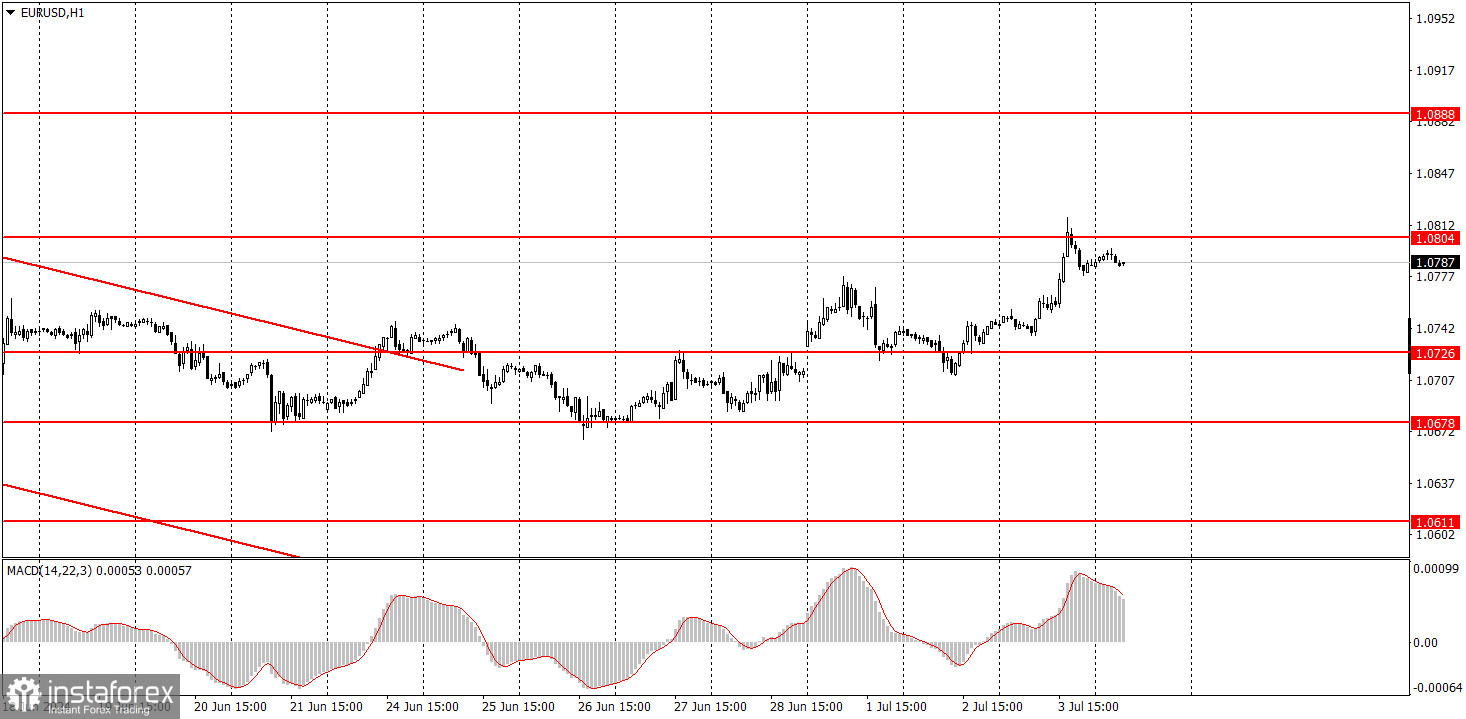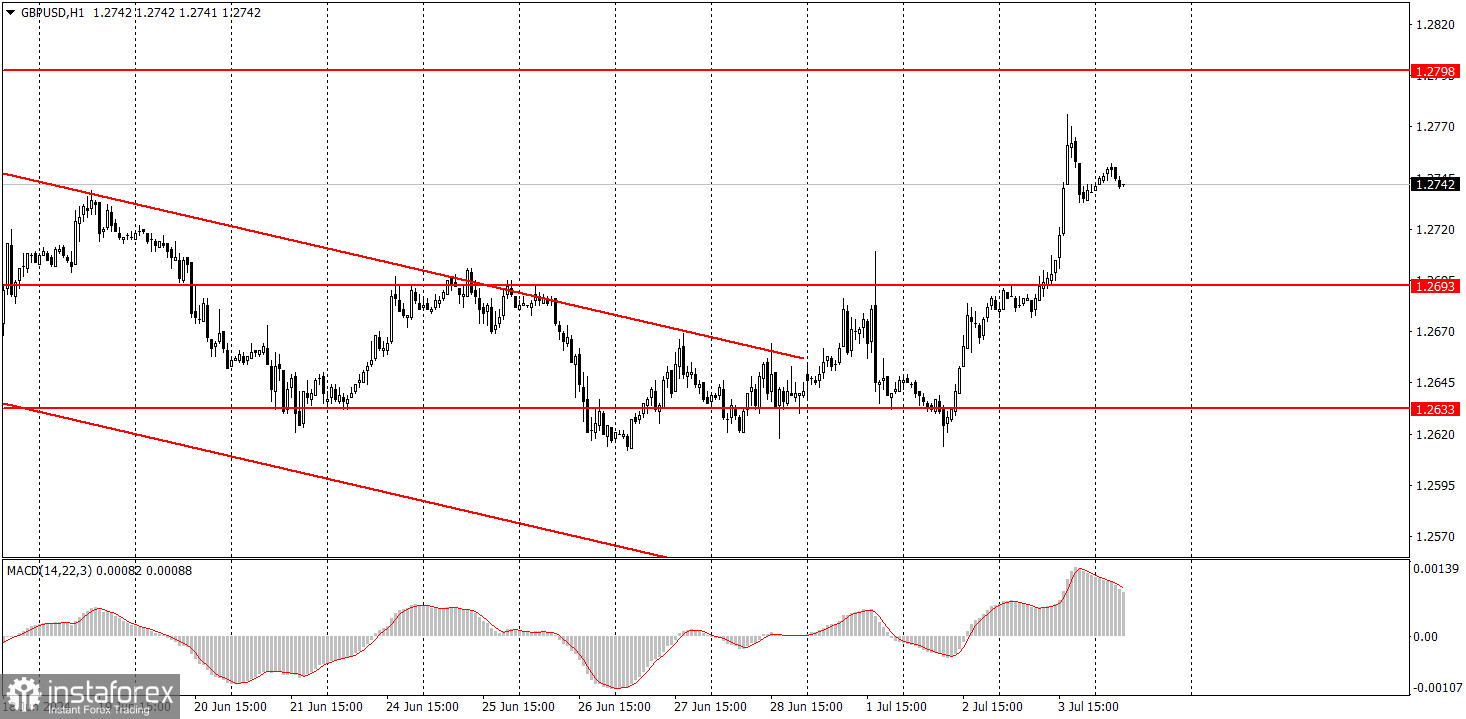Analysis of macroeconomic reports:

For Thursday, the lineup of macroeconomic events is practically barren. One may pay attention to the second assessment of the UK's Construction PMI for June. But in general, today's macroeconomic background does not have any influence on the currency pair's movements. US markets are closed in observance of the Independence Day holiday. Volatility may drop to zero, with a corrective movement likely to prevail after yesterday's growth.
Analysis of fundamental events:

There is absolutely nothing worth mentioning among Thursday's fundamental events. Today is officially considered a semi-holiday. However, earlier this week, Christine Lagarde and Jerome Powell delivered their speeches. There was no market reaction, even though the Fed chairman, for instance, said that the US central bank is not ready to cut rates. This information could have supported the US dollar, but the market has long stopped reacting to Powell's hawkish statements and continues to use any excuse to sell the dollar.
General conclusions:
Today, there will be no important events. Both currency pairs may experience low volatility, which we've already seen in recent months. Yesterday seemed to be an exception to the rule. We've mentioned in our fundamental articles that a year ago, the pound traded with twice as much volatility, moving an average of 100-110 pips almost every day.
Basic rules of a trading system:
1) Signal strength is determined by the time taken for its formation (either a bounce or level breach). A shorter formation time indicates a stronger signal.
2) If two or more trades around a certain level are initiated based on false signals, subsequent signals from that level should be disregarded.
3) In a flat market, any currency pair can produce multiple false signals or none at all. In any case, the flat trend is not the best condition for trading.
4) Trading activities are confined between the onset of the European session and mid-way through the U.S. session, after which all open trades should be manually closed.
5) On the 30-minute timeframe, trades based on MACD signals are only advisable amidst substantial volatility and an established trend, confirmed either by a trendline or trend channel.
6) If two levels lie closely together (ranging from 5 to 15 pips apart), they should be considered as a support or resistance zone.
How to read charts:
Support and Resistance price levels can serve as targets when buying or selling. You can place Take Profit levels near them.
Red lines represent channels or trend lines, depicting the current market trend and indicating the preferable trading direction.
The MACD(14,22,3) indicator, encompassing both the histogram and signal line, acts as an auxiliary tool and can also be used as a signal source.
Significant speeches and reports (always noted in the news calendar) can profoundly influence the price dynamics. Hence, trading during their release calls for heightened caution. It may be reasonable to exit the market to prevent abrupt price reversals against the prevailing trend.
Beginners should always remember that not every trade will yield profit. Establishing a clear strategy coupled with sound money management is the cornerstone of sustained trading success.





















